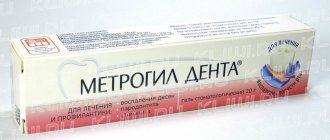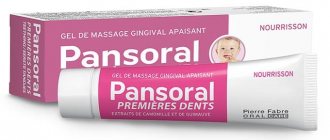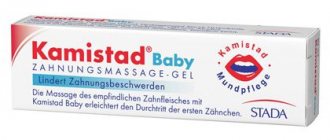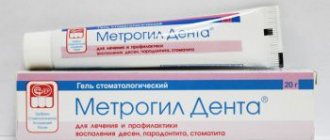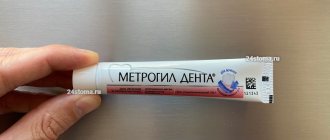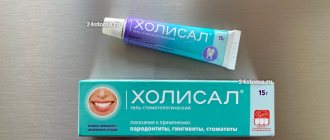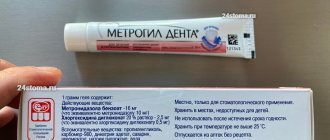Causes of aphthous stomatitis
Rashes in the form of aphthae on the oral mucosa can be the main manifestation of stomatitis if it occurs as an independent (primary) disease4. In other cases, ulcerations represent a symptom of another disease3,4. But determining the exact causes of inflammation is not so easy, because many different factors can trigger it5.
The development of acute aphthous stomatitis is often associated with a weakening of the body’s defenses after a cold (acute respiratory illness) or sore throat1.
The chronic form occurs under the influence of local and general factors5, among which are the following:
- Infection . The likelihood of aphthous stomatitis increases in the presence of chronic infections, such as tonsillitis (inflammation of the tonsils), pharyngitis (inflammation of the pharynx) and diseases of the gastrointestinal tract8.
- Local trauma. Not every damage to the mucous membrane leads to the formation of aft5. But in people with a hereditary predisposition, its injury quite often leads to ulceration5, especially in those who smoke or use dentures5,7.
- Dry mouth. Changes in the properties of saliva or its deficiency contribute to the aggravation of the symptoms of aphthous stomatitis5.
- Allergic reactions. Allergens can include food products10, components of toothpastes5,10, dust10, worms10, medications10 and materials from which dentures are made, for example, nickel5.
- Deficiency of certain nutrients . Inflammation is promoted by a lack of zinc, iron, folic acid, and group vitamins (B1, B2, B6, B12)5.
- Stress . Difficult experiences, mental overstrain5, chronic stress or frequent change of time zones8 often precede the appearance of new aphthae. In students, the disease often worsens during the session5,7,
- Hormonal disorders. In women, the development of the disease can be facilitated by hormonal changes during menstruation, pregnancy or menopause3.
With chronic aphthous stomatitis, an interesting reaction of the immune system is observed - its sensitivity to certain bacteria10 that inhabit the oral cavity increases7. When the immune response is excessive8, protective antibodies damage not only bacteria, but also their own cells7,8. The reason for this reaction is the presence of structures in the cells of the mucous membrane that are similar to bacterial particles6.
to come back to the beginning
How does aphthous stomatitis manifest?
The first manifestation of the disease may be a burning sensation in the mouth, which lasts from 2 hours to 2 days5. Later, aphthae5 appear on the mucous membrane - single or multiple12.
Aphthae can be recognized by the following signs:
- they form on the surface of the mucous membrane, representing a shallow defect2;
- covered with a gray-white coating12;
- surrounded by a reddish “rim”2;
- the shape of the ulcers is oval2 or elongated12, and the size in most cases is up to 1 cm in diameter2.
Ulcers can appear on any part of the oral mucosa, as well as on the tongue12. But usually they form where the submucosal layer is pronounced and can easily be damaged2 - this is the area of the cheeks, lips, floor of the mouth (under the tongue) and palate2, 12.
Aphthae are quite painful12, and they cause pain not only during eating or talking, but also at “rest”1, when nothing irritates the mucous membrane.
In addition to pain, aphthous stomatitis causes excessive salivation6 and bad breath1.
to come back to the beginning
Types of gum inflammation (gingivitis)
Catarrhal. The most common form of the disease. Disturbing sensations and itching in the gums, bleeding when brushing teeth or while eating, less often - pain and swelling of the gums.
Ulcerative. Often acts as the next stage after catarrhal inflammation. Often, ulcerative gingivitis develops as a result of general hypothermia, after an infection, against the background of vitamin deficiency. First, the gums hurt and itch, then swelling and blueness of the tissue appears. When pressure is applied, bleeding begins.
Atrophic . Signs of inflammation are not as pronounced as in other forms. The soft tissues atrophy (reduce in volume), so the gum level gradually becomes lower, and as a result, the tooth root is exposed. A symptom of the disease is pain when eating hot or very cold food.
Hypertrophic. With the hypertrophic form of inflammation, the gingival papillae increase and begin to cover part of the tooth. At first, the disease is asymptomatic. In later stages, if gum inflammation is not treated, bleeding and pain during eating and when pressed are noted. As a rule, the anterior areas of the upper and lower jaw, areas with dense teeth or various dental pathologies are affected.
Up to contents
How does aphthous stomatitis occur?
Mouth ulcers appear on the 2-3rd day of illness1. Usually after 7-10 days they heal without leaving marks1. However, when the disease becomes chronic, a relapse may occur1. In this case, a few days or several weeks after healing, aphthae appear again, although in small quantities - from 1 to 31. Although ulcers are painful, general health is usually not affected1.
Chronic aphthous stomatitis can occur in different ways2, depending on the size, depth and number of aphthous stomatitis. The following forms of the disease are possible:
- Small. The most common type7, in which elements up to 5 mm in diameter appear on the mucous membrane of the lips, cheeks and floor of the mouth. Aphthae heal without scarring within 10-14 days7.
- Big. This form rarely develops. Its typical manifestation is large ulcers, the size of which sometimes exceeds 1 cm in diameter. Aphthae can be found on the lips, palate and pharynx. They last up to 6 weeks, and after healing, scars remain in their place7.
- Herpetiformis. It is characterized by the appearance of many ulcerations with a diameter of 2-3 mm, which can merge7 (as is observed with herpes3). Their favorite places are the floor of the mouth and tongue7.
In the acute form, the symptoms are very similar to a cold: a person’s body temperature rises, general weakness and fatigue bother him1.
to come back to the beginning
How to treat aphthous stomatitis
Without treatment, the disease can last for many years1. Therefore, if ulcers, pain and burning sensations appear in the mouth, you should consult a doctor. Only a specialist can make a diagnosis and select the optimal treatment regimen. Most often, these patients are managed by dentists, but a general practitioner or family doctor can also help.
Treatment of aphthous stomatitis should be comprehensive, that is, aimed at solving several problems at once8:
- Elimination of foci of infection in the oral cavity using drugs for topical and oral administration8.
- Stimulate healing and support immunity . Wound-healing drugs, immunomodulators and antihistamines, as well as vitamins and micronutrient supplements are used8.
- Treatment of underlying diseases that contribute to inflammation of the oral mucosa, for example, diseases of the gastrointestinal tract and upper respiratory tract8.
During therapy, it is necessary to adhere to a gentle regimen - avoid spicy, rough foods and alcohol, as well as dentures if they injure the mucous membrane8.
To fight the infection, the doctor may prescribe topical medications - antiseptic and antibacterial10. Among them there are also combined agents, such as Metrogyl-Denta®9.
METROGYL DENTA® is a gel that contains metronidazole, which has an antibacterial effect, and the antiseptic chlorhexidine9. This combination can inhibit various types of bacteria and fight infection9.
METROGYL DENTA® is widely used in dentistry; it is approved by the Russian Dental Association11 and is indicated for the treatment of aphthous stomatitis9. The duration of treatment, dose and frequency of use is determined by the doctor, depending on the degree of damage and severity of the disease.
to come back to the beginning
Dosage and duration of therapy
Metrogyl Denta should be applied in a thin layer to painful and inflamed areas. After tooth extraction, the first application must be carried out within 30 minutes after surgery. In the future, you should treat the area of the hole and gums around 2-3 times a day. The course of treatment and prophylactic therapy is usually 7-10 days. Even if the patient feels well or visible improvements appear before this period, it is not recommended to stop treatment, since the soft tissues remain vulnerable to negative factors for a week after extraction. Complete local immunity will be restored approximately 10-14 days after removal.
Prevention
To prevent aphthous stomatitis, it is important to prevent exposure to risk factors, namely6:
- monitor oral hygiene6;
- quit smoking6;
- exclude allergenic products10;
- if necessary, replace toothpaste10, dentures8 - traumatic to the mucous membrane or made from materials that cause allergies6;
- visit the dentist regularly, every 3-4 months6;
- avoid stress5;
- treat foci of chronic infection in the body6.
Aphthous stomatitis is widespread, and there are many reasons that cause the disease and maintain its chronic course. To prevent the disease from prolonging, you need to eliminate possible provoking factors as quickly as possible and undergo a course of treatment from a specialist.
to come back to the beginning
Does smoking affect the effectiveness of use?
Dentists note that about 50% of patients seeking dental care suffer from tobacco addiction. Smoking negatively affects the condition of the mucous membranes, reduces local immunity and causes irritation of the gums. Tobacco smoke interferes with the healing of the hole after extraction and can become one of the factors provoking postoperative complications, so doctors recommend stopping (or at least reducing the number of cigarettes smoked) during the recovery period after surgery.
Important! Smoking is not a contraindication for the use of Metrogyl Denta, but it significantly reduces the effectiveness of therapy, preventing rapid healing of the socket and tissue regeneration.
Literature:
- Aphthous stomatitis. Nurse, No. 5, 2015, p. 21.
- Mikhalchenko V.F., Firsova I.V., Fedotova Yu.M. and others. A new approach to the treatment of chronic recurrent aphthous stomatitis (Setton's aphthosis) using the method of photoactivated disinfection and the immunomodulator Galavit. Modern problems of science and education. No. 6, 2015, pp. 1-6.
- Salomão Israel Monteiro Lourenço Queiroz, Marcus Vinícius Amarante da Silva. Ana Miryam Costa de Medeiros. Recurrent aphthous ulceration: an epidemiological study of etiological factors, treatment and differential diagnosis. (Recurrent aphthous ulcers: epidemiological study of etiological factors, treatment and differential diagnosis). An Bras Dermatol. 2018;93(3):341-6.
- Maksimenko P.T., Skripnikova T.P., Khmil T.A. Nomenclature, clinical classification of diseases, changes in the mucous membrane of the oral cavity, lips and tongue. Ukrainian Dental Almanac, 2008, No. 4, pp. 28-36.
- Sunday O. Akintoye, BDS, DDS, MS* and Martin S. Greenberg, DDS, FDSRCS. Recurrent Aphthous Stomatitis. Dent Clin North Am. April 2014; 58(2): 281–297. doi:10.1016/j.cden.2013.12.002
- Galizina O.A. Main aspects of the occurrence, clinical manifestations, treatment and prevention of chronic recurrent aphthous stomatitis. Russian Dental Journal, 2014, No. 6, pp. 39-42.
- Mahesh Chavan1, Hansa Jain2, Nikhil Diwan1, Shivaji Khedkar3, Anagha Shete1, Sachin Durkar. Recurrent aphthous stomatitis: a review. J Oral Pathol Med (2012).
- Volkov E.A., Butova V.G. Clinical recommendations (treatment protocol) for chronic recurrent aphthous stomatitis. Russian Dental Journal, No. 5, 2014, pp. 35-50.
- Instructions for medical use of the drug Metrogyl-Denta®.
- Strakhova S.Yu., Drobotko L.N. Chronic recurrent aphthous stomatitis (lecture). RMZh, No. 29 dated December 27, 2006, p. 2096.
- Dental gel for gums Metrogyl-Denta® in the treatment of periodontal diseases and oral mucosa. Practical medicine, No. 1(33), March, 2009, pp. 105-106.
- Glukhmanyuk D.S., Malinovsky V.A. Aphthous stomatitis. Proceedings of the scientific and practical conference “Modern problems of pharmacology, cosmetology and aromology.” International Humanitarian University, Odessa Medical Institute, 2015. – 48 p.
